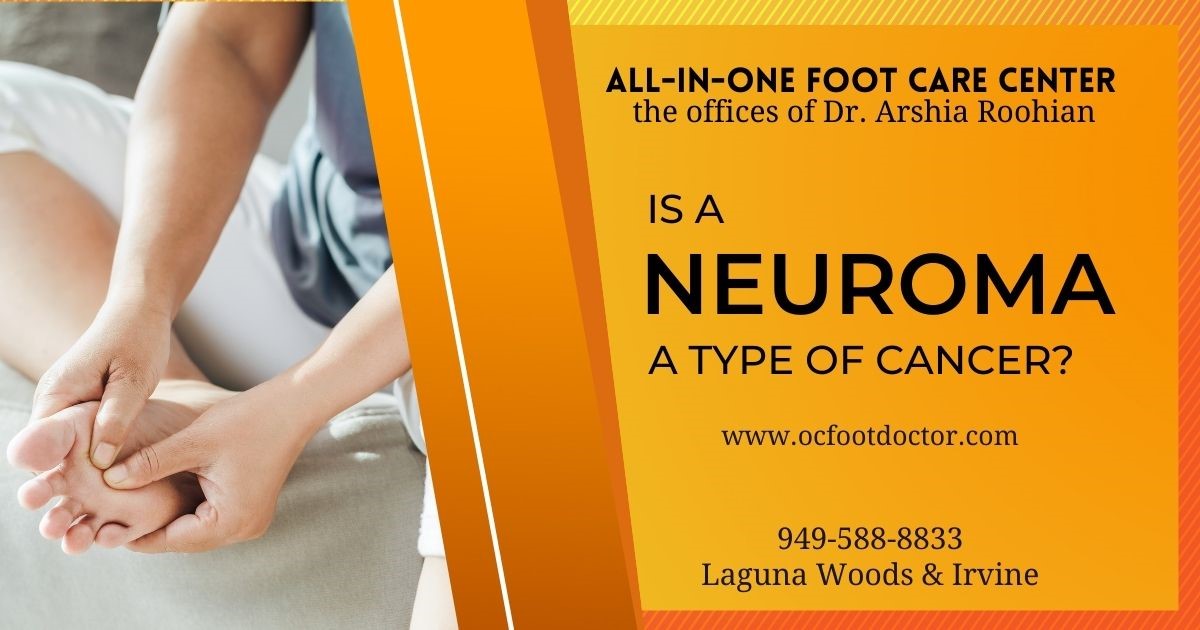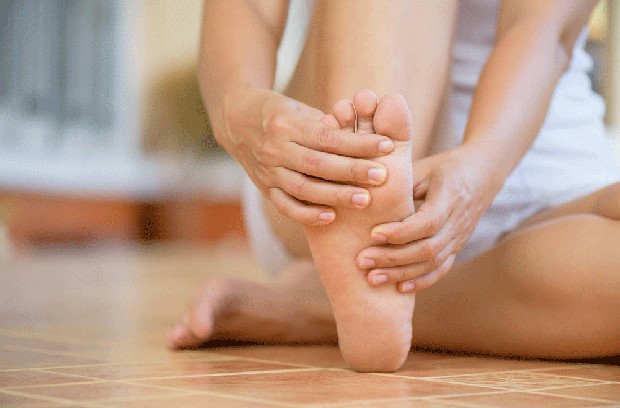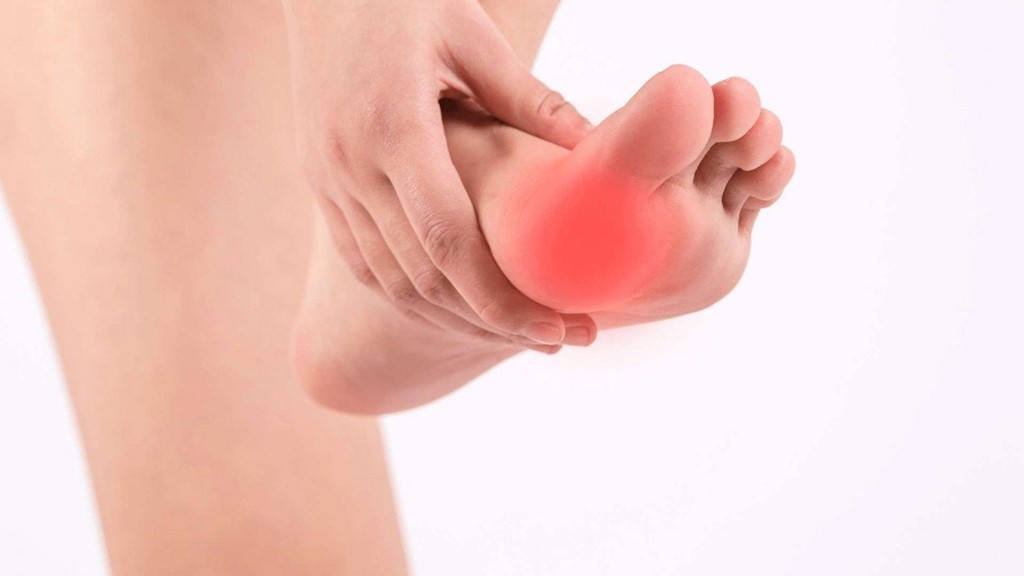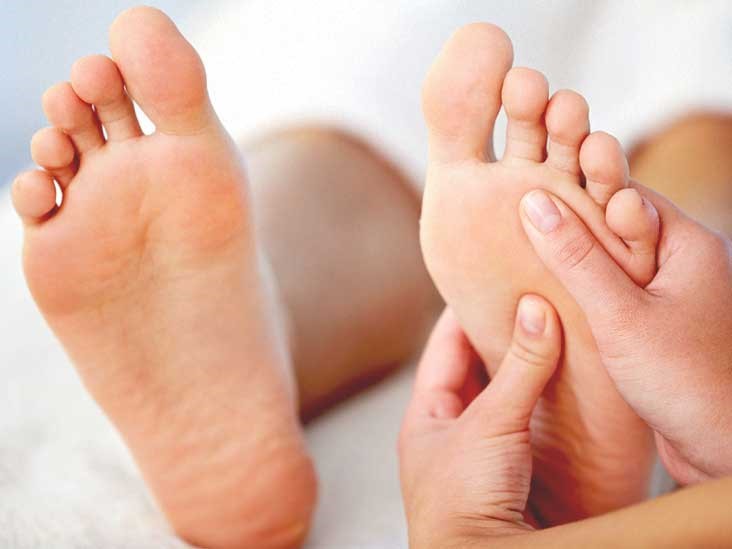Is A Neuroma A Type Of Cancer?

A condition that causes severe pain as a result of abnormal nerve tissue. A neuroma—a.k.a. "pinched nerve"—is an abnormal growth of nerve tissue that is often painful but typically benign. There are many places in the body where neuromas can occur. Neuromas can develop anywhere in the body. Morton's neuroma occurs in the foot between the third and fourth toes. Neuromas also occur in the hand.
The purpose of this article is to explain the symptoms and causes of neuromas. You will find information about when you may need to see a podiatrist (foot specialist) for a diagnosis and treatment of neuromas.

A Neuroma's Symptoms: What Are They?
It causes severe nerve pain when nerve tissues thicken due to neuromas. Besides changing the way your brain interprets touch, a neuroma can also cause dysesthesias2.
Sensations that are abnormal are called dysesthesias. There are two types of painful experiences: those that hurt and those that are just unpleasant.
There are two types of dysesthesias associated with neuromas, both of which often cause significant pain:
-
Allodynia: When stimuli should not cause pain, such as a light brush against the skin, moderate heat, or slight pressure from a waistband, it does.
- Hyperalgesia: A feeling of increased pain caused by normally painful stimuli. An individual with hyperalgesia, for example, might feel a six or seven when bumping a body part against a door jamb.
There are more specific symptoms depending on the region of the body where the neuroma forms. There are a number of symptoms associated with Morton's neuroma, including:
- Pain radiating from the ball of the foot into the toes
- Tingling, sharp pain that gets worse as you move
- A tight or narrow pair of shoes can aggravate pain
- Feelings of numbness or unpleasantness
- When you walk, you feel a clicking sensation
- After taking off shoes, there is pain
Neuromas are at risk for developing complex regional pain syndrome (CRPS), which causes pain over a wide area. In most cases, this is a gradual process. Additional symptoms of CRPS may occur in nearby tissues and structures, including:
- Sweating and circulation changes
- The density of the hair changes
-
The density of the bones is decreased
If you successfully treat the neuroma, you will typically see an improvement in these symptoms.
Seeing a podiatrist when you need one
A podiatrist may be needed for people with Morton's neuroma. Health care providers should diagnose and treat chronic pain or pain that interferes with daily activities. More than 80% of neuromas can be relieved by nonsurgical treatment, but they will not disappear on their own.

Causes:
In essence, a neuroma is a ball of scar tissue and axons, which form when nerves try to repair themselves. Neuromas that are not painful usually go unnoticed because they don't cause any pain.
Injury to a nerve can result in a neuroma, which can be caused by laceration (cuts), crushing injuries, nerve compression, or excessive stretching. In most cases, the cause is:
The removal of limbs, mastectomy, or repair of hernias is one of the most common types of surgery
It is well known that certain shoe styles affect the foot's natural alignment, whether the style is tight or high-heeled, pointed or poorly fitting.
- Genetic abnormalities such as flat feet
- Joint infections
- Stress due to repetition
- A pregnant woman
- There are several types of arthritis, including rheumatoid arthritis and gout
The pain associated with neuromas can last for months after surgery if they form after surgery. Chronic postoperative pain can result from this.
The pain associated with phantom limbs isn't caused by neuromas, which are often associated with amputations. Wearing a prosthetic can, however, be challenging or impossible them.
Diagnosis:
An examination and questions about your symptoms will help your healthcare provider diagnose a neuroma.
An examination usually involves testing the nerve to see if it causes tingling or pain, a process called Tinel's test.
A distinct lump may also be felt in the painful area, depending on the location of the suspected neuroma.
The imaging process may also be performed on you. It is possible to diagnose neuromas through ultrasounds, and X-rays can help narrow down possible causes of pain. Ultrasounds are cheaper and less time-consuming than magnetic resonance imaging (MRI), which is often used for cancer screening, but it can deliver false-positive results.
As well as using local anesthetics, healthcare providers may inject an anesthetic along known nerve pathways at the site of pain. This confirms the diagnosis if it relieves the pain.
Treatment:
Neuromas are treated nonsurgically with medications, physical therapy, or a combination of both. Medication for neuromas includes:
-
The central nervous system processes pain signals differently in patients who take tricyclic antidepressants, such as Elavil (amitriptyline). Burning and tingling caused by neuromas may be relieved by them.
-
A few studies have been conducted regarding the use of anticonvulsants such as Neurontin (gabapentin) and Tegretol (carbamazepine) in the treatment of neuromas, but much more research is needed. If you are unable to tolerate tricyclic antidepressants or if you require more relief than tricyclics can provide, they are considered an alternative for you.
-
Cymbalta (duloxetine) and other SNRIs, such as Serotonin-norepinephrine Reuptake Inhibitors (SNRIs). In addition to altering the way your brain processes pain signals, SNRIs are commonly used to treat nerve pain.
- The use of corticosteroid injections, like Medrol (methylprednisolone), can dramatically reduce inflammation. Nerve compression caused by inflamed tissues can be relieved by them.
Neuromas can be treated with a variety of physical therapy techniques, including:
-
In order to decrease hypersensitivity, de-sensitization exercises involve rubbing the residual limb with a variety of textures.
-
Electric stimulation: When an electrical current is delivered to your muscles via electrodes, a weak sensation is felt in your muscles. Pain, inflammation, and muscle spasms can all be relieved by this treatment.
-
It is thought that ultrasound helps heal soft tissues by heating them deeply. Unlike ultrasound imaging, which is a diagnostic tool, this is a different procedure.

Surgery:
It is not uncommon for your healthcare provider to recommend surgery if other treatments fail.
There are mainly two types of surgery:
-
Decompression, through the removal of nearby structures that placed pressure on the nerve
- An area of the body affected by nerve removal may become permanently numb
An incision made during nerve removal can often result in a new neuroma.
In general, conservative treatments are considered best before undergoing surgery because all surgeries are associated with risks. You should speak with your medical care team about all potential risks prior to undergoing surgery.
Prevention:
In order to prevent neuromas, it is important to understand the specific type of neuroma and its cause. Lifestyle changes may be beneficial for Morton's neuroma. There are several options available, including:
- If you have been involved in sports, rest and ice your injured area afterward
- The toes should have plenty of room to breathe in softer, wider shoes
-
The neuroma can be relieved by wearing shoes that have inserts that relieve pressure
It is also possible for you to adapt to some activities that you are unaware can be stressful on your foot, such as cycling. You may even need to consider how much time you spend in an office chair. The chair design of an office chair may contribute to the development of Morton's neuroma is 100 patients.
Talk to our experienced podiatrists today. You can contact our office at 949-588-8833 , or visit our website at https://www.ocfootdoctor.com/ Our offices are located in Laguna Hills, Irvine, Mission Viejo, Aliso Viejo, Lake Forest, Foothill Ranch, and Costa Mesa.


